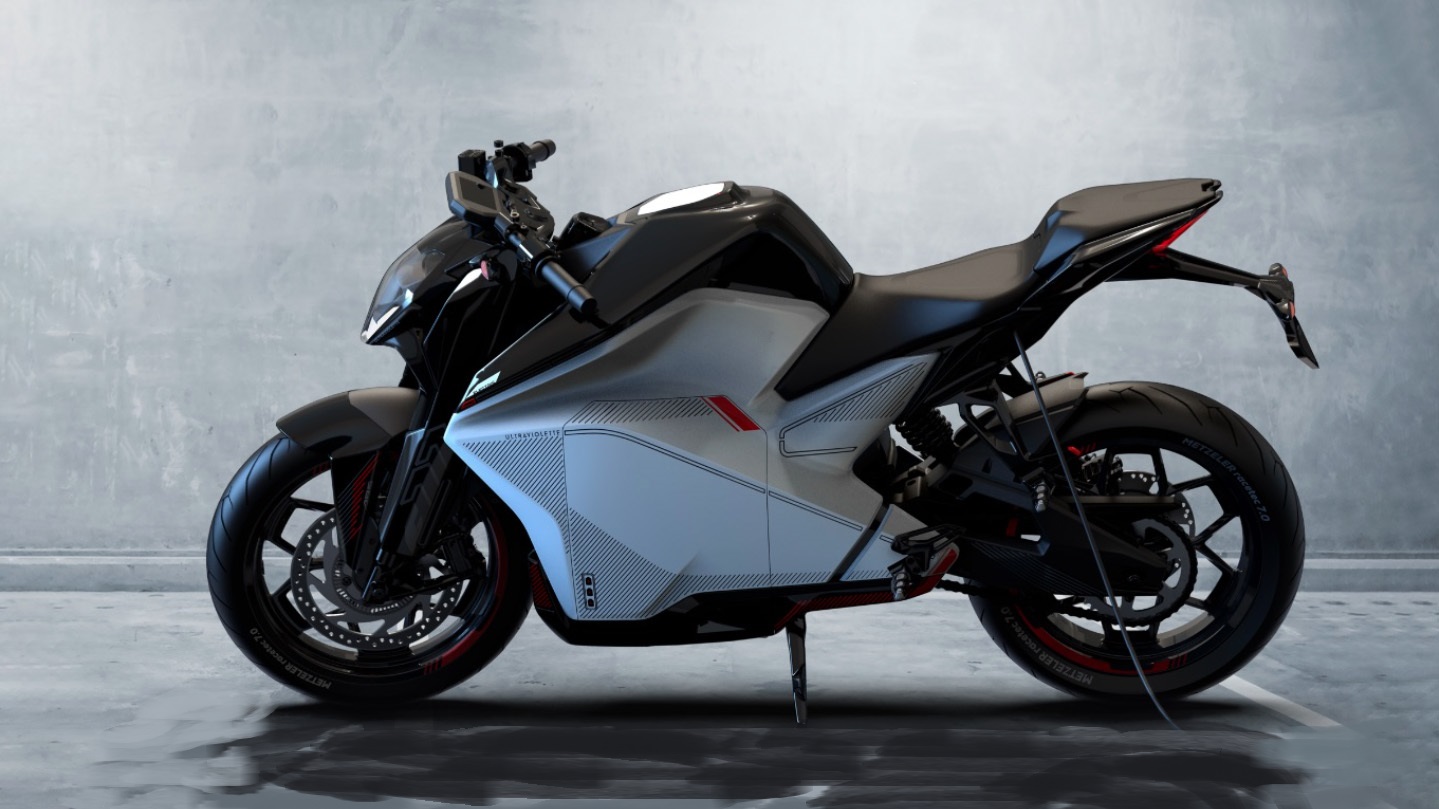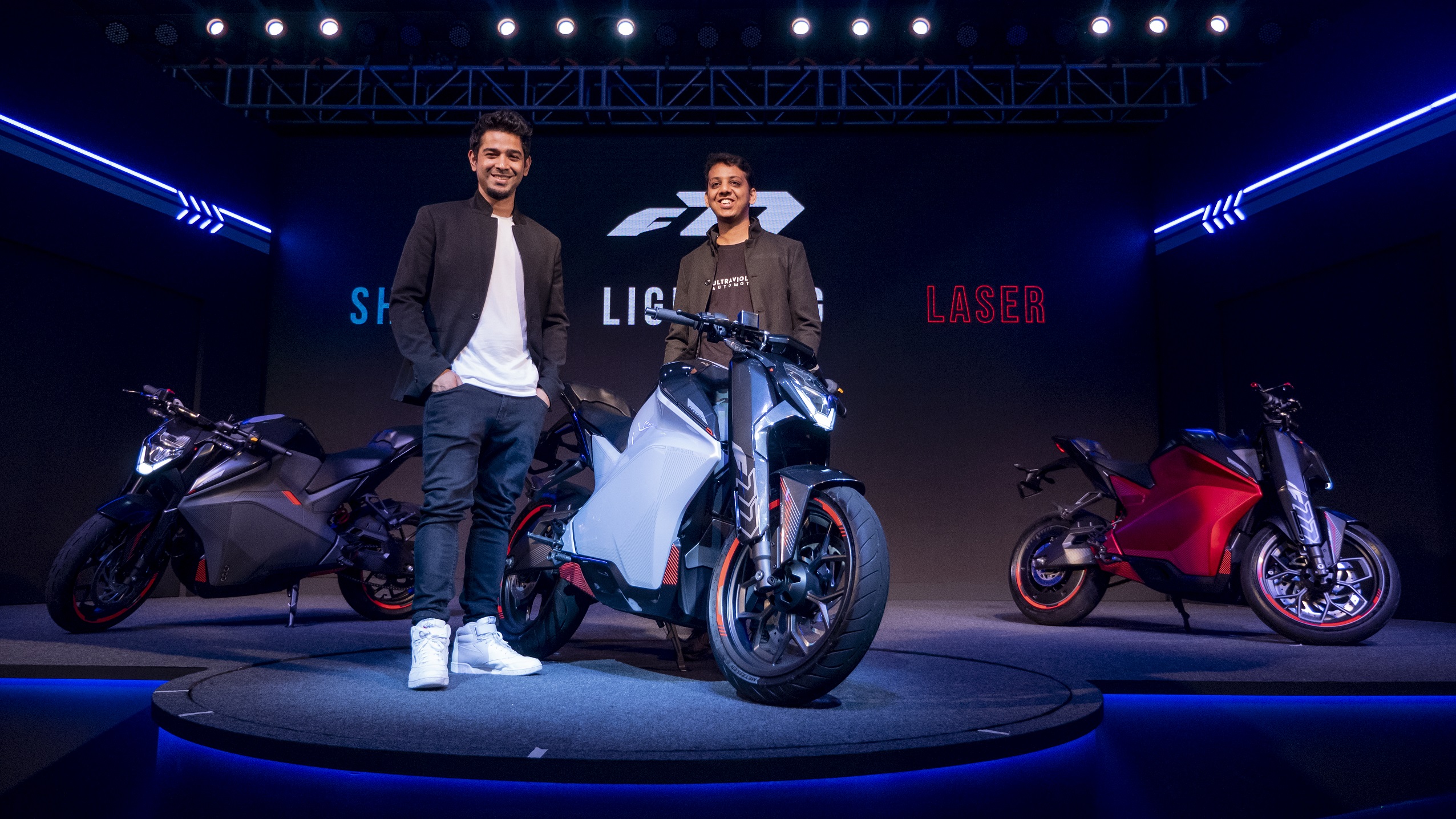Exclusive: How Ultraviolette is designing India's most advanced electric bike
Ultraviolette F77 will be unveiled this year
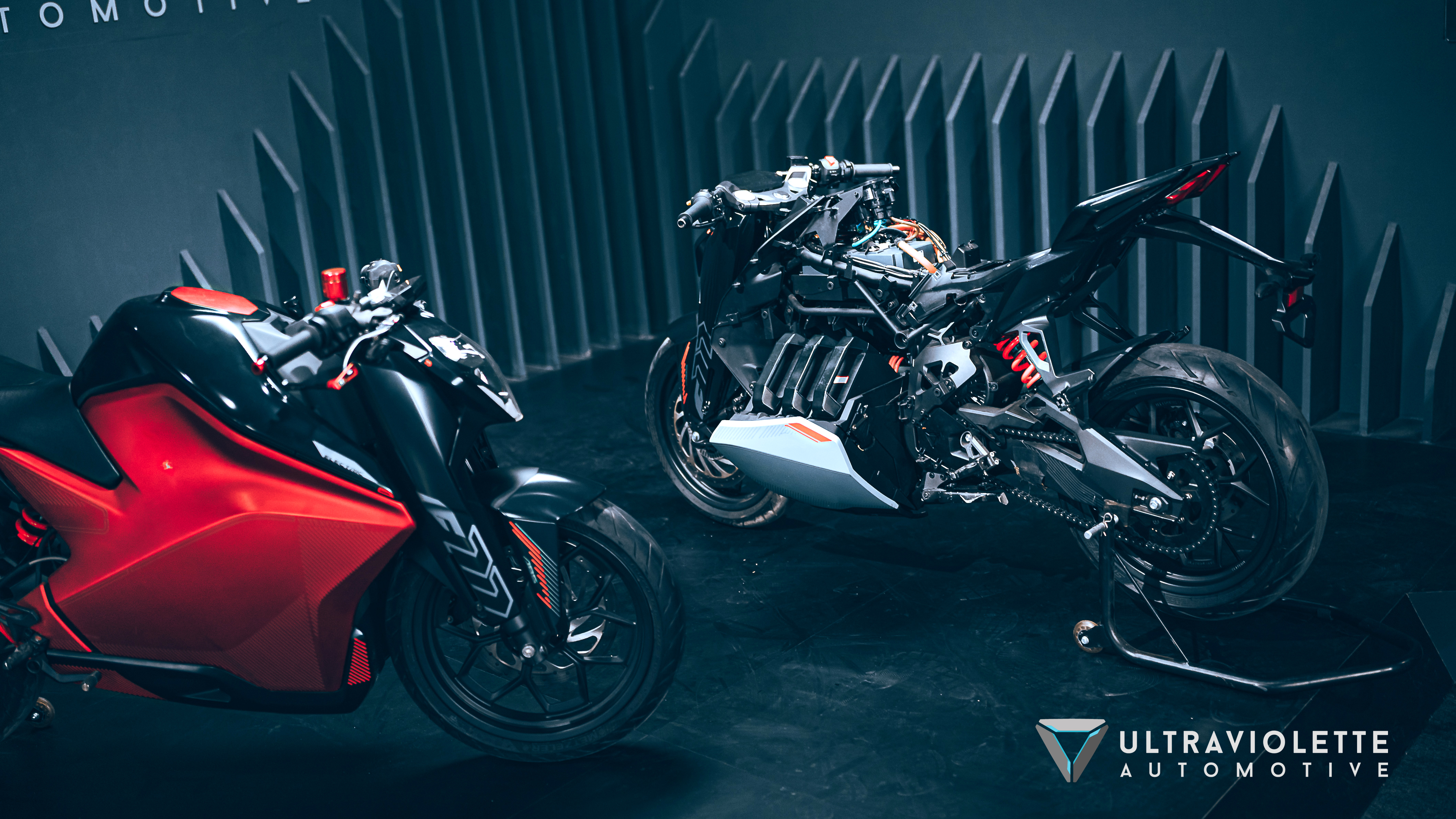
When the Ultraviolette F77 was unveiled at the end of 2019, it piqued the interest of EV enthusiasts and motorheads alike. In a short period of time, a young company was amongst the most popular players in the automotive space.
Of course, the market slowed down just months later, and Bangalore-based Ultraviolette Automotive had its plans delayed by a bit. However, the subsequent months were spent in perfecting the electric bike and getting ready for mass production.
Narayan Subramaniam and Niraj Rajmohan, the founders of the startup, gave TechRadar an exclusive sneak peek at what they have been up to over the last few years, what’s changed, and how they are building one of the most technologically advanced two-wheelers in the world — ahead of the Ultraviolette F77 launch later this year.
Ultraviolette F77 specs and features
Before we dive in, here’s a quick refresher on Ultraviolette Automotive. Founded in 2015, the company unveiled its maiden offering in November 2019 in the form of the F77 electric bike. Along with a superbike-like design, it boasted specs such as 147 kmph of max speed, 0-60 in under 3 seconds, 450 Nm of torque and a range of over 100 km on a single charge.
Moreover, it would be accompanied by a stack of smart connected features such as a companion app, customizable riding profiles, navigation, battery management system, fast charging and a lot more.
Most of 2020 was spent on improving the drivetrain and onboard systems. The tech has reached a nominal level and is now undergoing endurance testing. With the final testing underway, Ultraviolette will soon commence the mass production of the F77. The location of the manufacturing facility has not been revealed. The supply will be limited to 10,000 units a year for now to ensure a tight control on the quality – and thus, the experience. For the initial period, sales will take place through company-owned stores, starting with Bangalore. Expansion plans for other cities will be announced at the launch event which is scheduled for the end of 2021.
Here's a Q and A with the startup founders:
Sign up for breaking news, reviews, opinion, top tech deals, and more.
Recently, I had the chance to talk to @Narayan_UV and @nirajrajmohan about the #UltravioletteF77 — their upcoming electric bike with performance and features like no other!Check out our passionate discussion about @UltravioletteEV on @TechRadarIndia:https://t.co/0dPdxkLJFDApril 19, 2021
What makes the Ultraviolette F77 special?
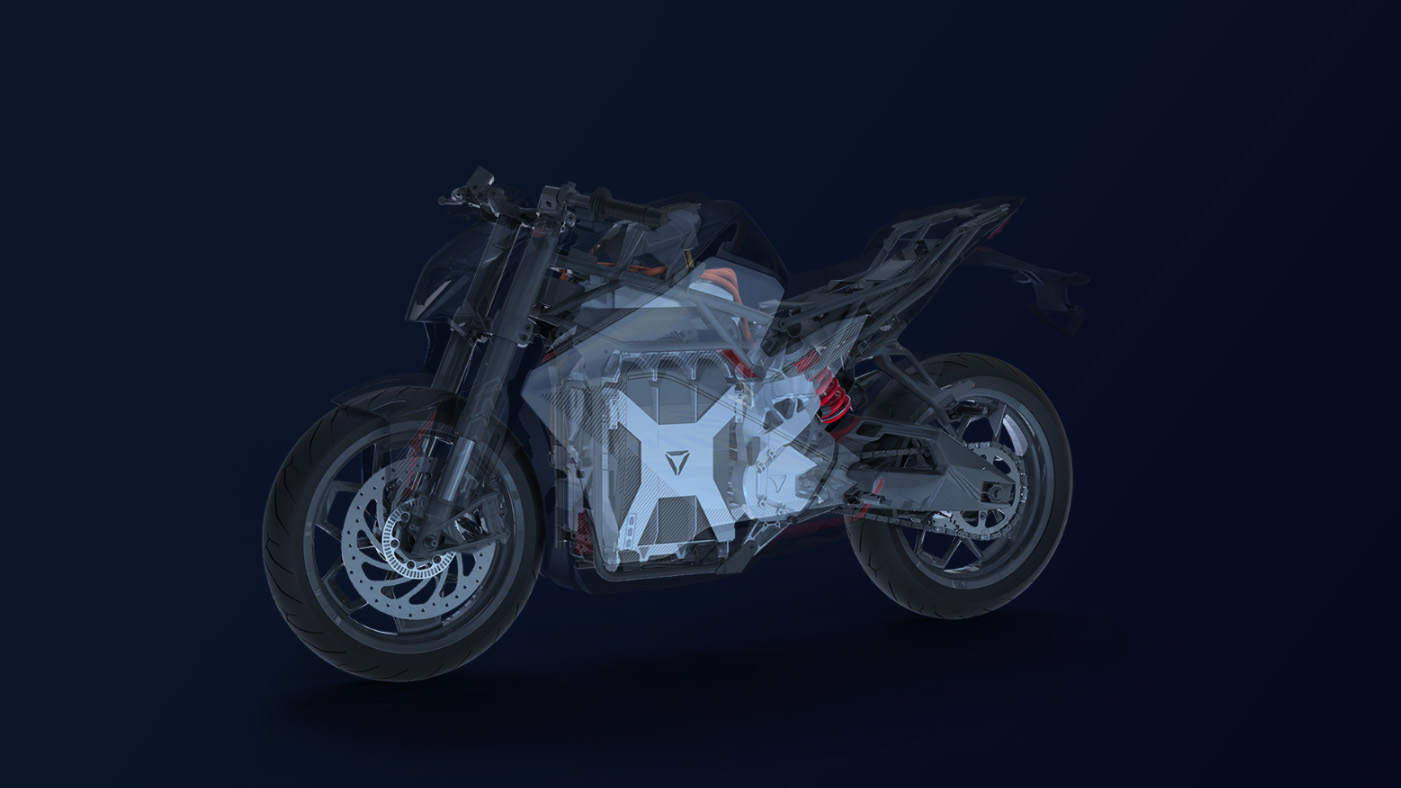

The product itself is closer to a high tech slash robotic gadget on wheels than just a bike with some features.
From the time we started, we were looking at it backwards from “what is going to be relevant in the market five years from now?” To give some more context of how things come about to that stage, when we built out the company and brought the team onboard, we realized that it cannot be just another automotive approach, with some focus on electronics; rather the other way around.
So today, the company has very talented folks from the automotive industry, from the aviation and aerospace industry, and from the consumer technology industry. You see the kind of innovation in our mobile phones and communication space happened over the last 10 years, right? That is the kind of innovation that we want to drive in the automotive space as well.
You’ve often talked about your intelligent battery management system and the corresponding IP. What’s so unique about it?
Every unit of electricity is accounted for.
This goes back into every single aspect of the vehicle, where we are able to connect to every aspect of the EV from the electronics, the motor controllers, the battery to the lighting systems and the data acquisition parts.
So we know how much energy went in from the wall charger, from the wall into the charger to the battery pack from and later on, when it is used from the battery pack, we know how many units of electricity have gone has gone from the battery pack to the motor controller, and how much was finally delivered to the wheel. And even if things like lubrication of the chain needs to happen, we're able to detect that by a difference in the efficiency of how much energy is produced and how much energy is consumed when the vehicle is moving. So we're able to track information to that accuracy. And to that level, where we can predict problems even before you can sort of feel them or realize them even happening.
What sort of features does this enable?
So what this essentially means is that the entire vehicle has this level of sensing capabilities, which you can exploit and have control over. You have a mobile phone app on Android and iOS and you're able to see and get a full sense of how the vehicle is behaving and even tweak its performance to a large level. And this is something that is never before seen on vehicles.
Another good example will be regenerative braking. I mean, this is something we've done significant work on to provide customization to the rider where you can define the amount of motor braking that can take in when you let go of the throttle. What's happening today on all bikes is we're wasting that energy as heat on the brake discs. Now, a lot of that can actually be kicked back into the batteries. And it's a lot of fun, especially when you're riding in traffic where you have a more natural slowing down deceleration process based purely on the throttle without even having to use the brakes too much.
So this is actually something that we realized when we started two-three years ago when we were getting our bikes around. And we realize that this experience of riding an electric bike can be more fun than riding an IC engine vehicle in the city, where along with easier stopping and speeding, you have this ability to very quickly recover energy back into the batteries and then put it out there again onto the road.
What else will a rider be able to do?

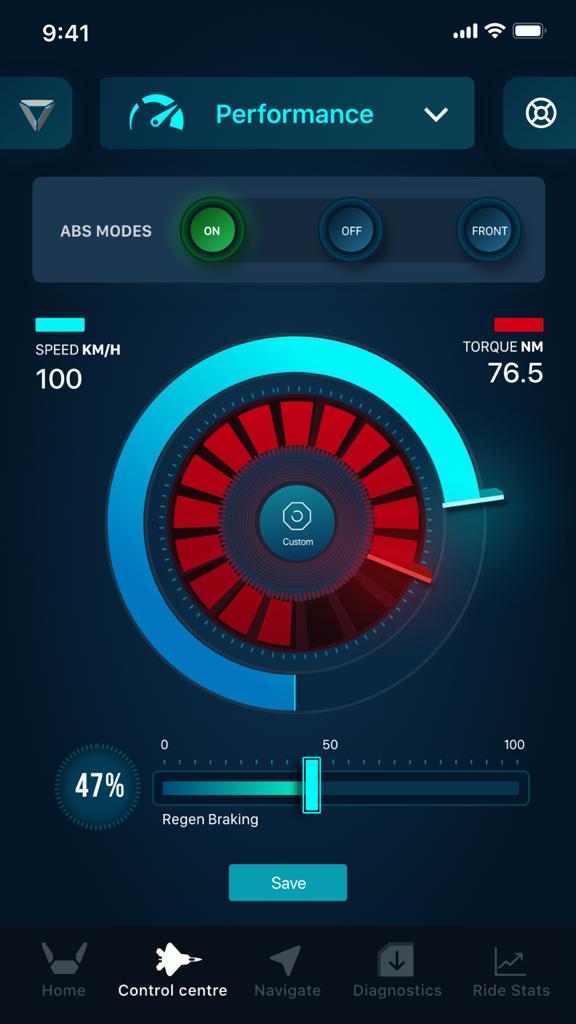

Then come things like discharge limit – tracking of history of the energy accountability part. I mean, this is something that means people will have to be informed on how to go about optimizing your battery life itself. So generally, it's better to avoid 100 to 0 discharge on the batteries in between the range of say 85 to 10, or 85 to 15. That effect has amazing consequences on extending the life of your batteries, over your five to seven years of ownership of the vehicles.
There will also be the option to customize how powerful regenerative braking will be, performance profiles, ABS, etc.
Then come the diagnostic aspects, which I was telling you about. Let's say, in one of the headlights, or taillights, or any part of the vehicle, there's a change in the current consumption, we're able to track that and tell you beforehand that something's going to break or it's about to break or, here's some part where you can proactively sort of take care.
The Ultraviolette F77 can tell you beforehand that something’s going to break.
We will proactively tell you here's a problem that may occur in a few days, what do you want to do about it? Here's a possible scenario of schedule of the changes required, and your possible timing that your vehicle can be picked up. So these are aspects of service, which have never been done before. We will also give you the sense of criticality of that problem: Is it something urgent? Or is it something we can look at during the next service? Or is it just a warning? Is there a way to recover from this with a software update?
Since it’s a smart vehicle, it will also track your location, navigation, routing, riding patterns and data from previous rides to provide insights on how to improve your efficiency. The app can also show information about your percentile ranking, carbon footprint, etc.
What if someone just wants to enjoy the ride without getting into all of this?


A motorcycle should be a fun independently rideable motorcycle.
The app features activation, which no doubt are impressively customizable, are also very optional. If someone doesn't want to bother with any of that, they can choose to ignore it all. The app connectivity was built to enhance your ownership experience.
While you’ll still be able to switch between the three ride modes (Eco, Sports, Insane), the app adds another level of customizations which ICE vehicles simply can not match. If you want to turn them off, they obviously come with some trade offs – we can disable location tracking, but then a user will not be able to find the bike if it goes missing.
You can also initiate a lockdown mode, and since there is complete connectivity with the vehicle and batteries, everything can be controlled remotely.
Similarly, if you want to let your friend borrow your F77, but you’re not too comfortable with somebody else writing in any history or GPS data that was there for your convenience, you can give that person partial access to your bike on the app.
Now that you’re close to your final form, looking back, what has been the most challenging aspect of your journey?
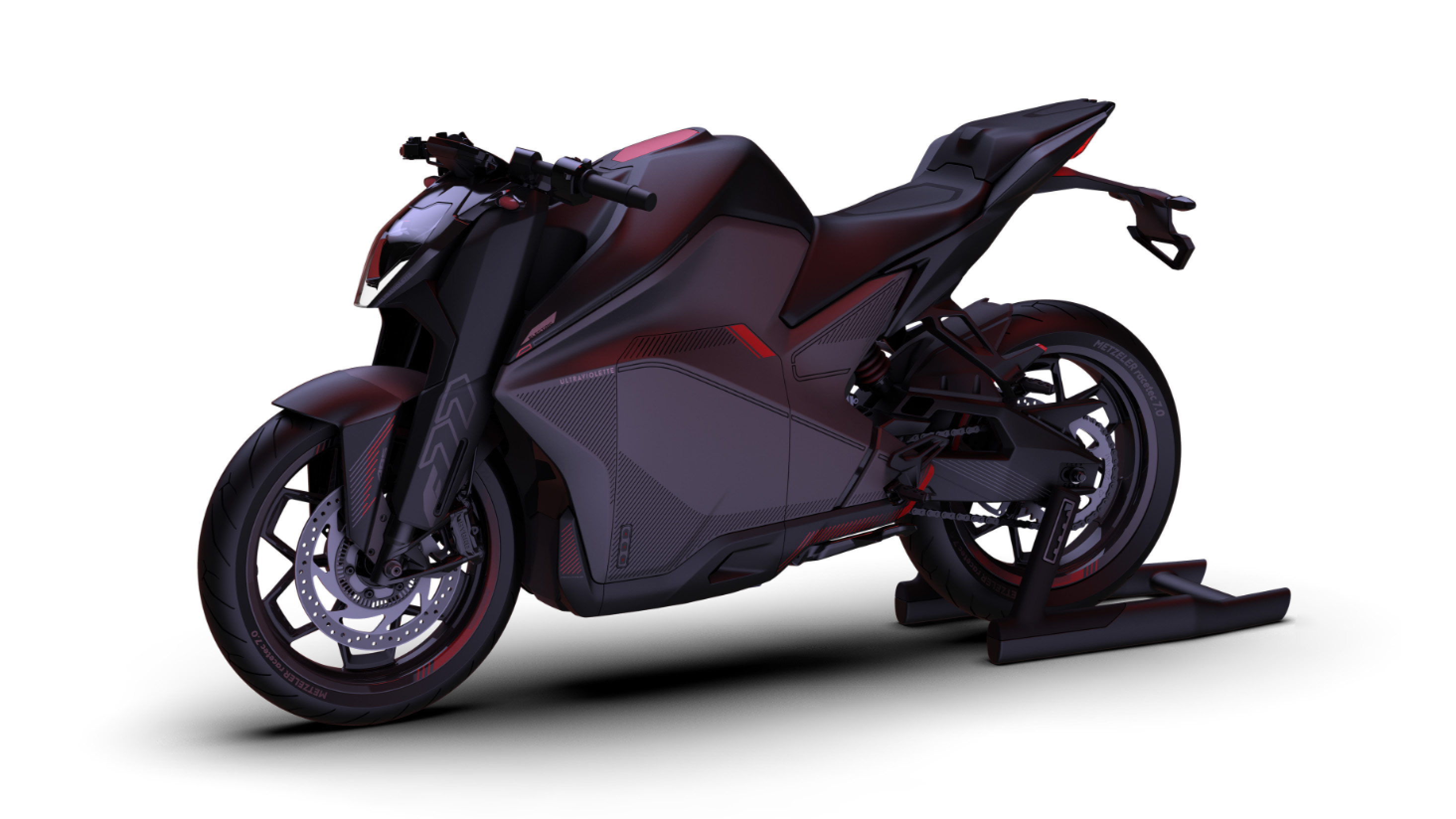
You can't find someone who's worked on electric vehicles for 15 years, right?
The most challenging aspects of the technical side were solving problems around the battery, and the electronic systems. Since we developed our own batteries and chargers too, all it had to be done in-house. We've had some very interesting challenges there and getting everything together has taken us about three years. The technical nature of these challenges means that there are very few people who can solve it. So it had to be solved by people with a history in consumer electronics, automobiles or aerospace.
So for example, the motors that we first had on our vehicles were the same motors that were used on small, sort of propeller-powered aircrafts. Since they are designed with an assumption of very high airflow over the motor, we had to solve unique challenges to make them adaptable for a motorcycle as well as make it waterproof.
Then come things like the electronics, when you go from five or six kilowatt power output to 30 kilowatts, the heat generated goes up exponentially (heat generation works as a square of the current – a 10x increase in the current will bring about a 100x increase in the heat). We also had to keep in mind how the climate across India can vary between regions and across seasons.
These problems had to be dealt with at a fundamental physics level. It wasn’t always a 100% certain that we would be able to solve those challenges, but today, that’s where most of the company’s intellectual property comes from.
How has the industry changed from when you started out to now?
The automotive industry was wondering if the future was going to be electric. Now, that question is no longer relevant.
We’ve known each other for a long time. Through our early professional career days, we often bounced ideas about electric vehicles. We could sort of forecast what was happening – the price was lithium-ion batteries were coming down from $1,000 per kWh to around $300. Multiple attempts had been done at electric vehicles. Tesla had proved that EVs can be a viable alternative. Various governments around the world started to take note, moving towards a more sustainable future.
It was no longer a question of “if”, but “when”. Electric would go on to be the chosen mode of transport, at least for shorter distances. While business models were changing, the need for a more sophisticated product had not changed. People are still using technology that was part of refined 30 or 40 years ago, and there have only been minor increments.
In cities like Mumbai and Bangalore, we’ve seen a considerable increase in the number of electric four-wheelers and two-wheelers on the road. Every ride I take, I see at least two or three EVs on the road, and that is a tremendous adoption rate. Two years back, that number was zero.
The rest of the world around us has been changing in terms of business models, but the technology as such, is following the exact same path that we had envisioned four or five years ago.
Would you call the Ultraviolette F77 the smartest two-wheeler?
In India, of course! I think even on a global level, it will be among the most technologically advanced vehicles. UV is positioned to be one of the best premium two-wheelers.
What do you think India needs to do to boost EV adoption?

We like what is happening right now. If you look at the last 15 years or so, people had been importing these knockdowns for the longest time and creating very low-powered scooters and those kinds of things. But in the last five-seven years, there have been serious attempts at making indigenously developed electric vehicles locally.
So I think there is where we like what is happening right there. If you look at the last 15 years or so there for a long time, people who are importing these knockdowns saying no, these things at work, we're working in some other geography. And now you're trying to take them and you put them in a name context. And it doesn't make sense, right? Very low powered scooters and these kinds of things. So what has happened in the last five or seven years is that serious attempts at making indigenously developed electronics for localization drive?
India is the largest power two-wheeler market in the world, and I think that will continue – just shift to EVs.
What we really need is a lot more companies in this space. There might be a slightly longer gestation period, and they will have to develop the R&D and product development capabilities in house, but at the end of that gestation period will be a more robust adoption of EVs.
This problem has been the same for the last ten years — India hasn’t been seen as a country with hardware product capabilities. But that is about to change and we’re seeing the early signs of that. Full, complete hardware products are coming out of here. In terms of perception, India was always seen as the country from where software is exported. Right now, we think it’s on a good path, and there’s going to be exponential growth for a lot of companies and industries.
Lastly, what can enthusiasts expect from Ultraviolette in the future?
Our intent is to continue this culture and DNA of innovation and commercializing innovative ideas in a meaningful way. So I think our approach is slightly different compared to you know, just looking at an Excel sheet and deciding which segment to go after. It's a little more from the point of view of where this is going to have meaningful results and consequences. And that is the way we are planning out our roadmap. Our industry, or technology will always be our focus and how to get as much innovation in a meaningful way, as soon as possible. That sort of forms our philosophy in terms of deciding what to get into.
- Ather 450X review: everything you need to know before buying
- Tesla looking to set up showrooms in three Indian cities soon
- Switch Delhi campaign aims to promote EV adoption - here's what we know

Aakash is the engine that keeps TechRadar India running, using his experience and ideas to help consumers get to the right products via reviews, buying guides and explainers. Apart from phones, computers and cameras, he is obsessed with electric vehicles.


